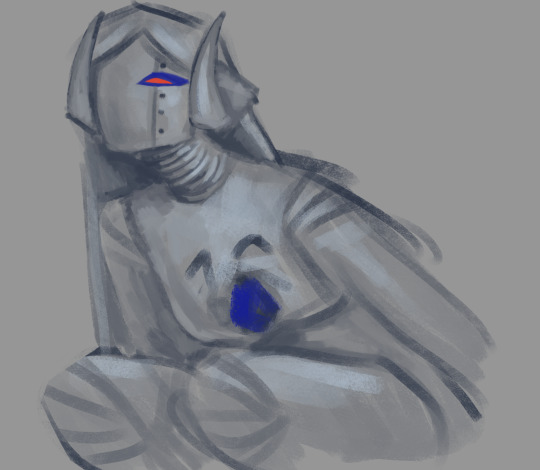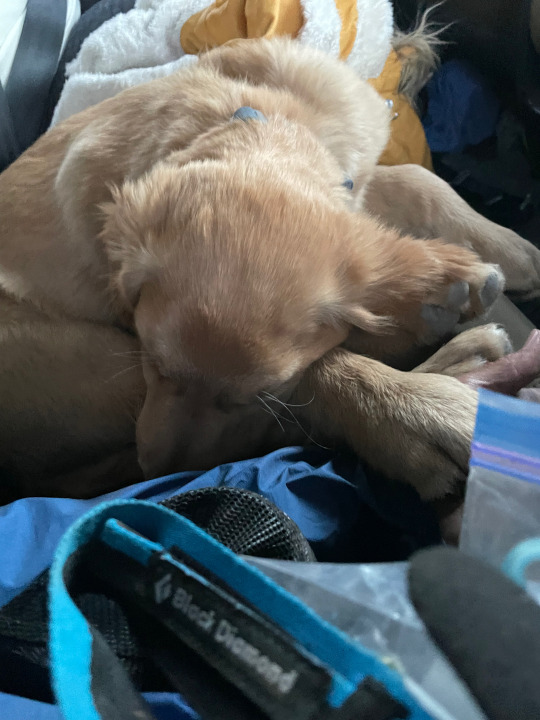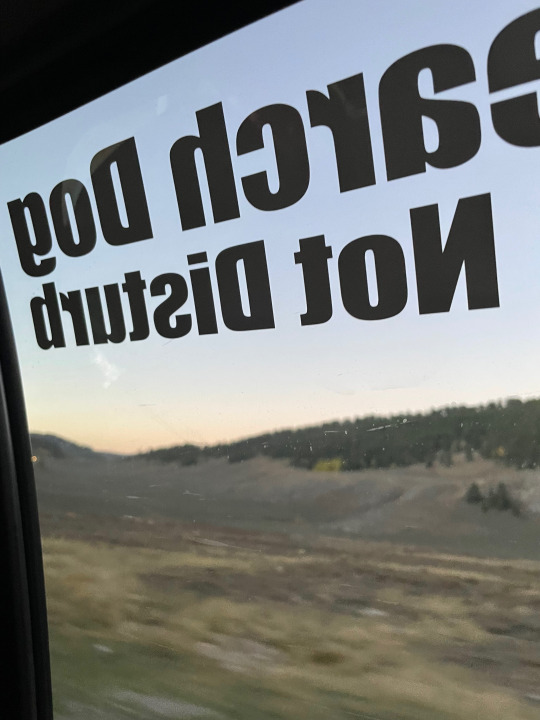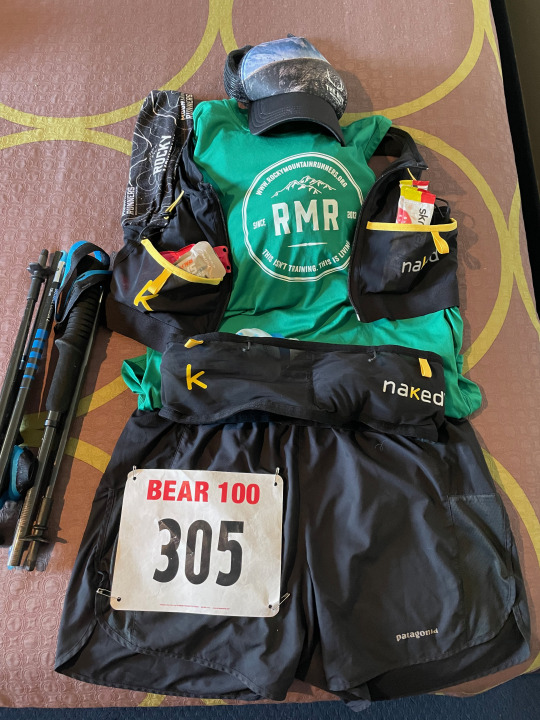#100% vibes based. knowing how light actually reflects is for nerds
Explore tagged Tumblr posts
Text


Women are always talking about "long live the new flesh" then immediately exploding, it's a real problem.
#HI I'M SO SORRY I'M EXPERIENCING THE HORRORS!!!! I'M STILL AROUND#Painting metal is so soothing#100% vibes based. knowing how light actually reflects is for nerds#I keep thinking about arabot which I'm sure means nothing and is in no way a reflection upon my psyche :)#aradiabot#hs#homestuck#my art#aradia megido
351 notes
·
View notes
Text
Bear 100 🐻 Race Report: You Have to Run the Downhills
The past isn’t made of facts, not really, just stories people tell to make themselves feel better.
— Joe Abercrombie, The Wisdom of Crowds
Dear Reader: why are you reading this race report?
If you’re a runner looking to do this race and want info, read sections II, III, VI
If you’re wanting a narrative story about the day, read II, III
If you want to know whether my drop was righteous or wimpy, read III, IV, VII
If you want information about my kit and equipment, read VI
If you’re a geeked-out nerd person, or a strategy junkie whose idea of ‘fun’ is destroying Logic Men on Twitter, or an aspiring ‘life coach,’ read I
I. META-STUFF ABOUT RACE REPORTS: When you finish a race like the Bear 100 (by which I mean wrapping up the weekend, whether your efforts got you an official finish or a drop somewhere along the course), you are left with an enormous heap of impressions and recollections and thoughts and analyses and excuses and explanations. Most of these are true, but they are not all necessarily coherent when combined with all the rest, and (more importantly) they are not always helpful. The job of writing a race report like this involves sorting through all of these thoughts and selecting a coherent narrative that makes sense.
That’s the easy part. A lot of possible, true, narratives make sense. How to choose among them? If you plan to enter races like this one in the future (as I do), the narrative that you construct in your race report will be also be useful to you later, guiding you to make better decisions for future races based on your experiences in this one. This process will inevitably favor some impressions and analyses over others, and as the memories of the race fade, the race report will harden into the Narrative Story of My Race, which will be coherent, true, and (if I do it right) helpful to me in future races.
As an example of the difference between helpful and unhelpful stories, an unhelpful story might be, “I didn’t do as well in this race as I’d hoped because I have no natural talent” or “the aid stations stocked Heed and Heed is disgusting.” These might both be true, but if that’s your story, how do you fix it? You can’t, so it’s not helpful. Heed is ubiquitous at aid stations in races all over the country. A helpful story, in contrast, might be something like, “I didn’t eat enough” or “I started too fast” or “I wore the wrong shoes” or “I didn’t do enough weekly mileage to prepare for this race.” All of these things are something you can act upon to get better results at the next race.
II. THE UNFOLDING OF THE RACE: I got out of bed at 0350 and was full of coffee and on the start line by 0600. It was still dark. Chilly but not cold. I was unfortunately wearing the New Balance Minimus shoes that I’d driven to Logan in, because I’d forgotten to pack the actual Salomon S-Lab Sense 8s that I wanted to use for the first twenty mile section. Making do!
I was somewhere in the middle of the pack when we finished the three or four blocks of residential street and funneled into the single track trail headed up Logan Dry Canyon. The conga line wasn’t too annoying, except for the guy ahead of me who was one of those guys who like to play music on speakers during a race so everyone around him can share his obvious love for Rob Zombie. The view of Logan as we got higher and the sun rose was spectacular. (Most people are still pretty energetic during this section so you’ll find videos of this aplenty on YouTube if you search for “Bear 100.”)
I should mention the hornets. There were a lot of them along the course all day and they were stinging people left and right. I’m used to living a charmed life, so I was not too surprised when the hornets spared me. Thank you, hornets.
After the initial long climb there are some rollers and I ran them easily. My downhill pace was much faster than most of the crowd I’d been with on the way up. A Utah resident named Kalina ran with me for a while and kept me from doubting my judgment that I was going downhill at a reasonable pace. Alas! This was the last time I’d pass a significant number of people (this is called ‘foreshadowing’).
Near the end of the rolling section Kalina dropped me and everyone else around her like a sack of potatoes on some short uphills and I never saw her again. She ended up finishing in around 27 hours (maybe I should have doubted my judgment). We meandered over to the big downhill into Leatham Hollow and I am sad to report that halfway down this beautiful descent I was losing the ability to run downhill. Basically leg and knee and foot pain with everything tightening up. And so it had begun — people passing me. So it would continue.
I got out of the the Leatham Hollow aid station with 5:04 elapsed, which was pretty much on my best-case-scenario pace for the overall race. I had my first drop bag there with beefier shoes, so I put them on, ditched the long shirt I wore at the start in favor of a tank top, and moved on.
Next was a flat-ish dirt road over to the Richards Hollow aid station, about three miles away (23-ish race miles total). It was mid-day and it was now hot in the sun but still cool in the shade. I tried the trick of running the shady parts and hiking the sunny parts. After the aid station the course settles into the classic Bear 100 pattern: low aid station, then big climb and descent to the next aid station. This climb was sunny and hot and I got up ok, but the next downhill was a mess. I couldn’t PAY people to not pass me. That’s what happens when you’re not running the downhills! I came into Cowley Canyon aid station knowing that a 30-hour finish was unlikely but, hey, a finish of any kind is still fabulous. I took a little longer in the aid station then I’d like on a good day, but then was off.
The Bear 100 pattern of up-down continued through the Right Hand Fork and Temple Fork aid stations. The little creek going into Right Hand Fork had some of the most beautiful beaver ponds I’ve ever seen: clear water that let you see right to the bottom with bright green plants floating on top. Another thing about Right Hand Fork — there was a pickup truck in the parking lot with big white lettering on the windows: Search Dog, Do Not Disturb. I looked closely at the truck but couldn’t see the search dog. Needless to say I was mildly disappointed (this is another example of foreshadowing).
I had pretty much been suffering ever since Richards Hollow but I started to feel a little bit better coming into Temple Fork just before it got dark. This was probably just a function of it not being hot any more. I was off pace but dealing with it. Physically feeling generally weak and miserable but mentally very sharp, and emotionally pretty stable. I got my headlamp out of my drop bag, put on a long-sleeve shirt, a light hat, and a wind jacket for the chill that set in immediately when the sun went down, and headed uphill again.
III. THE DROP: Climbing up to the Twin Creek aid station at the about the 50-mile mark (the Tony Grove substitute aid station for 2021) it was predictably dark and, thanks to the dry air, quickly getting colder and colder. The good vibes quickly fell away. I wasn’t able to eat anything because of nausea, so progress was reasonably slow up the climb. Some runners about twenty feet ahead of me startled a beaver and I heard its tail slap against the water of its pond. (And, since I remember it clearly now, at least I must not have been completely delirious then.) So long as I was climbing I was warm enough, but the nausea was getting worse and worse, and if I tried to fight the nausea by taking my foot off the gas a bit, I quickly got too cold and started shivering. I was stuck between my GI tract requiring that I decrease my physical exertion so it could start to function again, and a dependence on continued exertion to generate enough heat. A catch-22 that most people who’ve run a 100-mile race will probably recognize.
When I got into the aid station at Twin Creek, I went into the warmed tent with the intention of relaxing for fifteen minutes to half an hour to give my stomach an opportunity to wake up. (Was that a mistake?) The plan was to eat and drink some things, put on some warmer clothes from my drop bag, and get out. Depending on who I talked to, it was somewhere between 12 and 14 miles to the next aid station at Franklin basin. This was the longest distance between any two aid stations in the race. I still had plenty of time before the cutoff.
Sadly, fifteen and then thirty minutes came and went and I was not recovering. The nausea wouldn’t go away and I was still shivering vigorously even in the warming tent after I’d put on warmer clothes and gotten under a reflective space blanket. The cutoff time got closer, and the decision became more and more about whether I should set off for another 12 (let’s be optimistic) miles without any food in the stomach, to try to get to the next aid station before I got hypothermic. It was unlikely that I’d get to Franklin Basin by 2 am, which is the time I figured I had to be there to have a reasonable chance of finishing the whole race in 36 hours. Ultimately I decided that the risks weren’t worth the increasingly unlikely reward. So I dropped. Nothing too unusual here, just weighing probabilities and applying my own risk tolerance to various decisions. This is probably what most people do when they DNF a race.
Grrr. Very mad. Many F-bombs.
IV. WHAT COULD I HAVE DONE DIFFERENTLY? I think this is a mandatory question after a DNF, because I HATE drops and it’s not worth protecting my ego if it means I overlook mistakes and fail to handle the next similar situation in a better way. With the caveat that this is all in retrospect, and that my current comfort might be obscuring an accurate recollection of how feeble I was at the time, here is what I would do:
I would still wait in the aid station to give the shivering and nausea a chance to go away, but when they did not stop, before I dropped, I’d get up, put some snacks into a little bag I could take with me, and continue out of the aid station with the intention of going a half-mile down the trail to see what happened. If things were still shitty the whole way, then I could turn around and head back and I’d only have a half-mile return trip to safety.
V. THE SEARCH DOG, or, AFTER THE DROP: After two or three hours of lying on the cot in the Twin Creek aid station with a few other people and their pacers who had dropped, a guy named Rob arrived in an ATV and four of us piled in. Rob drove us down to Franklin Basin with full-bright headlights lighting up the rough two-track and the cold wind blowing in our faces. It was my first ride in an ATV! After we’d arrived at Franklin, I made sure to compliment him on his driving (he was obviously, even to an ATV virgin like me, very good at it). I immediately went into the warming tent at Franklin and settled in until I could find a ride, ideally back to my car at the Logan start line, but willing to simply be shuttled along to further aid stations if that were necessary.
Most of the people arriving to Franklin were in bad shape, and either dropped there or struggled out just ahead of the generous (in my opinion) cutoff time of 4 am. Like I said before, I doubted there was much chance of making the overall race cutoff of 6pm if you weren’t out of Franklin by 2 am, absent a resurgence of speed later in the night or when the sun came up. (There is an objective way to check if I’m wrong or not, but I haven’t done it because at this point, I don’t want to look at the results!) Anyway, most of the people leaving Franklin were leaving with their crews on the way to Beaver Creek lodge. I kept waiting for someone who could give me a ride to Logan, and the odds looked slimmer and slimmer. Well after the 4 am cutoff time, a woman walked in with a four-month-old golden retriever puppy who I immediately made friends with because the puppy wanted to chew on my hand and I let him. He wasn’t biting hard! Turns out the puppy’s owner was crewing someone who came in with her pacer around 6 am after having taken about six hours to make the trip from Twin Creek. This runner’s dad was also crewing; he asked if I needed a ride and was happy to take me back to Logan. So I struggled out of the warming tent and whoa! Remember back at Right Hand Fork aid station where I’d seen that pickup truck with ‘Search Dog, Do Not Disturb’ on the window? That was his truck, and the golden retriever puppy was his Search Dog! Turns out, he had two full-grown trained search dogs and this puppy was going to follow along after them when he grew up. So, happily, I got to ride back to my car in Logan with a very nice family and a very nice little pup.

The Search Dog!

Inside the Search Dog truck
VI. THE KIT: The most notable thing about my gear was that I wore the new High Capacity Running Vest from Naked Sports Innovations. It’s an extremely tight running vest with a front zipper. I like to call it a Sports Bra for Men. I thought it worked pretty well and I will probably wear it again. The advantages are that it’s very lightweight, you can pack a lot of shit into it if you have to, and because it’s so tight, there is zero bouncing of your water bottles or other gear when you’re running. The disadvantages are also related to its being so tight. There were times when my chest felt kind of sore, and I wondered if the vest was compressing my ribs a little too much. The other problem is that zipping it up in front can be difficult if your vest is fully loaded because, again, it’s very tight. Also, when you add layers for the night section, you have to add them on top of the vest or risk it being even tighter if you bulk up your chest with extra layers under the vest. My solution will probably be to buy another vest one size bigger for long races or when I plan to be wearing layers. It costs a lot of money, but so do other vests, and at least I’m not a triathlete so all my gear compared to that sport is CHEAP.
In addition to the vest, I also wore a Naked running band. Both the vest and the belt have good mechanisms for stashing folded-up poles. I had poles, which were very useful after thirty miles for both climbs and descents. I wore the Salomon Ultra Glide shoes for everything after the 20-mile aid station, and they worked great. Because I forgot to pack the Salomon S-Lab Sense 8 shoes that I had planned to wear at the start, I was forced to wear my New Balance Minimus shoes from the start to 20 miles, which did cause some plantar irritation and ankle soreness on the long downhill into Leatham Hollow. I think these shoes are great but only for distances less than ten miles (and never for gravelly surfaces with inch-wide rocks that can dig into your feet).
I used SkratchLabs and Ultima electrolyte mix in order to avoid the aid-station Heed (which is disgusting), and carried Spring Energy gels. I had the cheapest salt tabs I could find at REI. Goodr sunglasses and wool socks which I changed a few times. I had no blisters, no sunburn, and no injuries!

The obligatory pre-race kit photo
VII. THE AFTERMATH AND THE ANALYSIS: It’s never fun or satisfying to have to drop from a race. The good news is that this DNF wasn’t entirely surprising in retrospect. It was exactly what I deserved! Looking back on this summer, I basically just fucked around and did way too little preparation for this race. I had only one training run of greater than 20 miles and hadn’t raced at all this summer. I never really got out into the mountains and didn’t go up any fourteeners this year. The covid withdrawal from the world was probably part of this; I was just waiting stuff out. I had signed up for the Bear a year ago and frankly, wasn’t excited about it until about a month before the race. There were two or three weeks where I went back and forth about starting, and by the time I’d firmly decided to do it, there wasn’t enough time to actually train for it.
Another bit of good news is that unlike the Bighorn 100 where I felt I *had* to keep coming back every year until I finished that race, I do not think that way at all about the Bear 100 (probably because I’ve already finished one 100M race and I’m comfortable with not being a super-fan of 100s.) I enjoy this race and will likely come back to try it again, but I don’t feel *obliged* to.
The third bit of somewhat good news is that this failure at the Bear rekindled a bit of enthusiasm for actually preparing myself to do well at a race. On the drive home from Utah I was thinking about how I’d structure my season in order to do well at the Bear, and I think that’s a pretty good sign!
VIII. SO, HOW WOULD YOU STRUCTURE YOUR SEASON? Whatever it takes to be able to run the downhills after twenty miles! More specifically I suspect the best preparation for me for a fall 100 would be one or two 50 milers earlier in the summer. For the Bear, I would do the Pikes Peak Ultra 50M in July and maybe an earlier-season 50 like Quad Rock or Behind the Rocks. I’d probably tune up with something like the Telluride Mountain Run in August. In addition, I’d do a few more longer runs during the summer like Gold Hills or a Doug Loops or Morrison Triples, and I would do some above-treeline tundra adventures. All of this just to build a bit of endurance and let me RUN THE DOWNHILLS at the Bear. 🐻
Links
Strava GPS record for my race
Bear 100 website
Bear 100 Facebook group
Bear 100 YouTube videos
0 notes